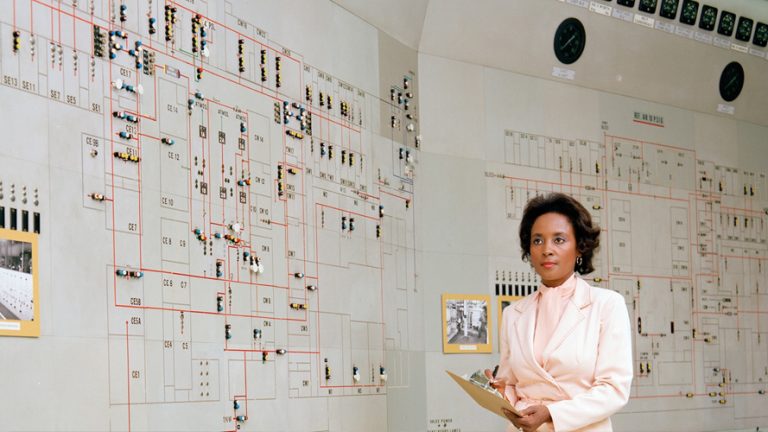As technology and practices altered, the role of female programmers have changed, and the recorded history of the field
It’s a common notion that technology is a field dominated by men, but the fact is that technology or programming has nothing to do with gender, it is pretty much anyone’s game. A little research on the Internet would show there are a plethora of female programmers who have proved their mettle in the field of technology.
Let us look at some female programmers who made it big in technology and made us proud:
1. Ada Lovelace (1815 – 1852):
Ada Lovelace was born in 1815 in London, UK. Ada was born nearly 100 years before the prototype of the modern-day computer was built, but she is still regarded as a pioneer in programming. Ada’s reputation can be attributed to her work on the interpretation of Charles Babbage’s analytical engine. The analytical engine enabled the mechanizing of mathematical operations and is hence considered a major event in the timeline of computer evolution. The Ada programming language, named after her, is an object-oriented, high-level programming language that has built-in support for design by contract, strong typing, concurrency, offering tasks, synchronous message passing, protected objects, and non-determinism.
2. Grace Hopper (1906 – 1992):
Grace Hopper was a computer scientist born in New York on December 9, 1906. She wasn’t just a scientist; she also served in the US navy. Her technological contributions and achievements include the invention of the first compiler for a programming language and the pioneer ship in the programming of the Harvard Mark 1 computer. She was the mind behind popularizing machine-independent programming languages which later paved the way for one of the first high-level programming languages, COBOL.
3. The ENIAC programmers:
Six female programmers created the first programmable computer that was fully electronic. The women were Kathleen McNulty Mauchly Antonelli, Jean Jennings Bartik, Frances Snyder Holder, Marlyn Wescoff Meltzer, Frances Bilas Spence, and Ruth Lichterman Teitelbaum. The project was run by the US Army and was a secret World War II project. There weren’t any programming languages then and programming had to be done based on logic diagrams. The outcome of their efforts was a computer performing complex calculus in seconds. They, however, didn’t receive credit for their work. These women were later called the six great women of ENIAC. An ENIAC programmer’s project is now dedicated to researching their work and getting them the honor that is their due.
4. Evelyn Boyd Granville (1924 –):
Evelyn Boyd Granville was the second African-American woman to earn a Ph.D. in mathematics from an American University. She went to Smith College, Massachusetts, and later earned her Ph.D. in 1949 from Yale University. She started her career with a teaching position at Fisk University. She then joined the US space technology laboratories, where she helped US space missions by studying rocket trajectories and orbit computations. In 1967, she returned to her teaching career and continued her advocacy for women’s education in tech for the remaining 30 years of her career.
5. Sister Mary Kenneth Keller (1913 – 1985):
Among the first people in the US to receive a doctorate, Keller was a pioneer in computer science. After earning her master’s in mathematics from DePaul University, she worked at the National Science Foundation where she developed the programming language BASIC to make computer education more accessible to the masses. After her doctorate, Keller set up the computer science department at Clarke College to promote computer education.
6. Shaw (1955 –):
Carol Shaw is believed to be the first female programmers’ video game designer. A graduate in electrical engineering from the University of California, Berkeley, she began her career at Atari Inc. She created some of the most popular games for Atari Inc. such as Polo, 3-D Tic-Tac-Toe, and River Raid.
7. Janese Swanson (1958 –):
American software developer, Swanson is famous for founding Girl Tech, a company for making technology more interesting to women. At the age of 15, she started working as a salesperson in the television and sound system department at Sears. Her experience in sales came in handy when she became the manager of the technology department at a store called My Child’s destiny. She did her certifications in computers from Berkeley and a Ph.D. before creating Girl Tech.
8. Parisa Tabriz (1983 –):
Parisa Tabriz turned her passion for cyber security into her profession. Parisa was drawn to website security during her college days after her website was hacked. She researched extensively on network security and privacy-enhancing technology during her graduation. She was soon selected for a summer internship at Google that later turned into a full-time role. She now leads Internet Security for Google chrome, worldwide.
9. Radia Perlman (1958 –):
Radia Perlman is a software developer who invented the STP (Spanning-Tree Protocol), which is fundamental to the operation of the Internet. While studying at MIT, she took up an undergraduate research opportunity and developed a child-friendly robotic language, TORTIS (Toddler’s Own Recursive Turtle Interpreter System). She made many notable contributions to network design and standardization including link-state protocols.
10. Edith Clarke (1883 – 1959):
Edith Clarke was the first female electrical engineer. She was also the first female professor of electrical engineering at the University of Texas at Austin. Born to a family of nine children, she was orphaned at the age of 12. She used her inheritance to fund her college education and became a graduate in mathematics. She taught at a private school before joining AT&T. While she worked there, she managed to complete her degree in electrical engineering from Columbia University.






Add comment